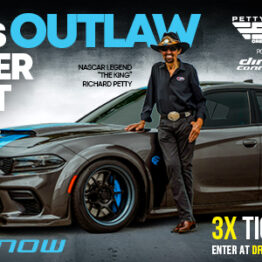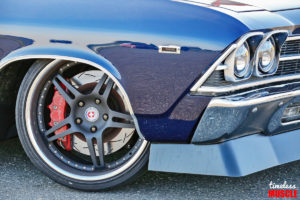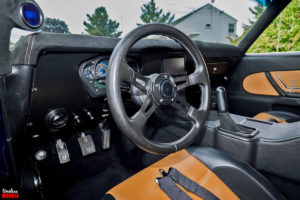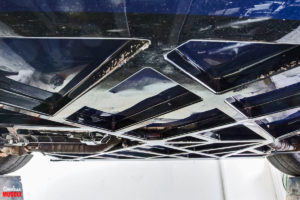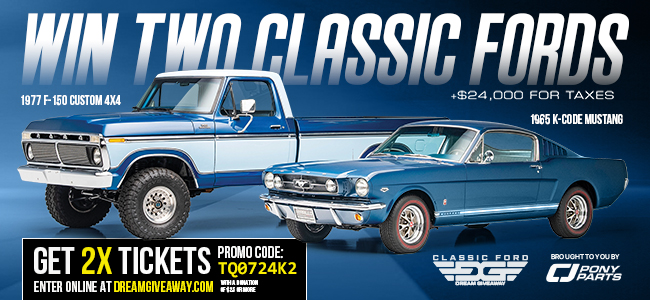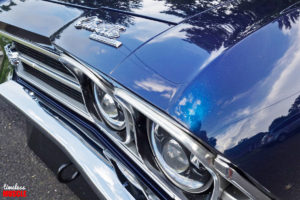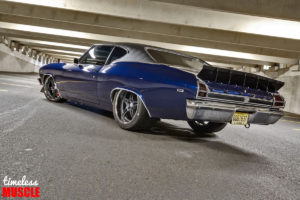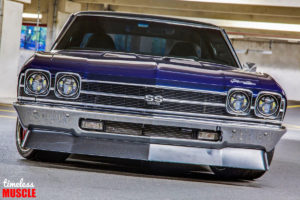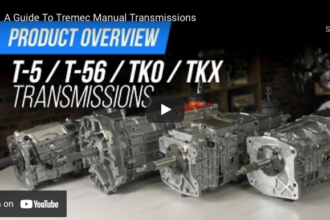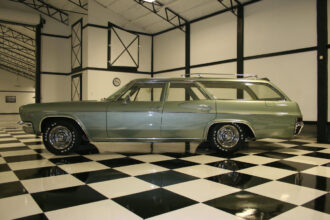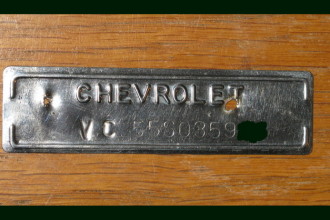photos by: Joe DiDario
When a Straight-Line Chevelle Just Wouldn’t Cut it for a 21st Century Musclecar Owner
By just about every possible measure, and in every regard, the Chevrolet Chevelle is probably the most popular classic musclecar to ever hit the pavement. Produced from 1964 and 1977, it filled a niche for a growing market for those who wanted a stylish coupe, but without all of the mass of the Impala/Biscayne. It also retailed at a lower price point, which was exactly what the Baby Boomers who were just entering the market wanted to see.
Released with an optional Super Sport (SS) package to provide additional performance, function, style and attitude, the Chevelle SS tapped directly into the musclecar scene that was just kicking off at the time. In the Chevelle’s case, the first and second model years of the Chevelle SS offered small block power, but it wasn’t until 1966 the Super Sport came with big-block power as standard equipment.
Fast forward to 1968, and the Chevelle would undergo a complete restyling that would shorten the body a bit, and would largely carry over for the 1969 model year. What could arguably be one of the best-looking Chevelle produced, they’re still among the most-modified and restored examples out there.
We recently ran across this one, at a recent Goodguys event in Columbus, Ohio running the autocross course. Of course, the has been some substantial modifications made to the car for it to even be able to compete. However, before we delve deep into this car’s tech sheet, let’s first examine how it got to this point in the first place.
Rewinding our clocks back to January of 2005, Nick Weber picked up the ’69 Chevelle from Tennessee after he first discovered it on eBay in January of 2005. It was purchased as a replacement for another ’69 Chevelle that Nick had totaled just a few weeks earlier. Funny enough, Nick initially scrolled right passed it, thinking he couldn’t afford it until he went back and realized that the seller was only asking $16,500.
As Nick tells us, “I had just turned 19 at the time and scraped up every dollar I could to buy it. My Dad and I left the next day to go get it, and we got about a half hour away from the owners house I called him to let him know we were almost there. His reply was that ‘someone was there to buy the car right now,’ but he said he would wait for me and give me first shot at it since i drove down from NJ. When I walked in the garage the car was up on a lift.
“I had just turned 19 at the time and scraped up every dollar I could to buy it.” — Nick Weber
We walked under it, checked it all out for around five minutes and told him it was sold. We asked if we wanted to hear it run, and [I told him] it really didn’t matter. The car was so clean; not even a pinhole or trace of any rust at all or any prior repairs either. I bought it as a complete car to use as a driver while finishing a long-term street rod project I was working on (a ’46 Chevrolet pick-up on air bags) that I had started a few years earlier.”
Under the hood, the Chevelle had a big-block 396 and TH-400 transmission, but they wouldn’t be there for long. Looking for more power, Nick yanked the throwback 396 and installed a 540 cubic-inch stroker BBC. Looking for better drivability and increased fuel economy, a modern 4l80E sits behind it. He then lowered the Chevelle substantially, performed some suspension upgrades and installed more supportive seats.
“I bought it as a complete car to use as a driver while finishing a long-term street rod build I was working on (a ’46 Chevrolet pick-up on air bags) that I had started a few years earlier.” — Nick Weber
Once that first winter of 2007 came around, Nick decided to respray the car. Mostly out of boredom with his truck build, but partly because he felt it deserved a slightly better coat than it had at the time.
 Over the succeeding months and years that followed, Nick continued to improve the Chevelle, here and there, until Nick pulled the 540 that was destined for the aforementioned ’46 Chevy truck, and in went a Jesel R&D 502 race engine.
Over the succeeding months and years that followed, Nick continued to improve the Chevelle, here and there, until Nick pulled the 540 that was destined for the aforementioned ’46 Chevy truck, and in went a Jesel R&D 502 race engine.
Packed with top-of-the-line hardware from Jesel, it produced incredible power and was paired with a 6-speed manual gearbox that Nick had laying around his shop. Evidently, Nick wasn’t having as much fun with the 6-speed as he originally thought he would, so out it came and in went a built 200-4R from a Buick Grand National. A Vintage Air A/C system went in as well, which made the A-body more enjoyable to drive on this hot summer months.
Shortly thereafter, Nick became increasingly more interested in cars that could handle and looked to road racing as a new form of competition. He started spending time on the pro-touring forum and researching what others were doing with their builds. Around this time, is when the American Street Car Series took off, and Nick would ultimately attend the first RTTS (Run to the Shore) event on the East Coast.
Ironically, Nick initially decided to sell the car upon retiring to his shop, thinking it would be easier to build another car from scratch rather than completely rebuild the Chevelle after all of the work that he had put into it. He received an offer from a buyer in California, after he had inspected the car and left a deposit.
A couple of weeks had gone by of Nick’s father trying to convince him otherwise, but after deciding to keep the car Nick reached out to the would-be buyer to tell him the del was off. As it turned out, the buyer couldn’t afford the car anyway, so Nick refunded him the deposit and the rebuild began.

Already sold on the performance and potential of the LS-series engines to to their lightweight, compact design, Nick selected a boosted stroker engine for his reborn A-body. Utilizing a ZL1 LSA block, Chevrolet Performance ported LS3 heads and a 2.9L Whipple blower for increased airflow capacity, the bottom would have to be pretty stout to handle the boost and abuse that Nick had planned.
That’s why a forged, lightweight Callies Magnum XL 4-inch stroker crankshaft sits at the foundation, connected to eight Oliver billet connecting rods and forged JE 9.9:1 pistons. The stretched the stock displacement of the LSA from 376, to a full 418 cubic-inches. A custom blower camshaft, sits squarely inside the LSA block. An AlkyControl methanol kit with a 4.5-gallon tank and twin nozzles are stainless hardlined in front of the throttle body. The engine was also positioned further back six inches, for increased balance and improved handling.
Custom heat-wrapped headers help expel spent gases form the engine, with 2-inch primaries into 3-inch exhaust and Magnaflow mufflers — all black ceramic coated. Mike Frumusa at New Era Performance in Rochester, NY handled the tuning duties, and his expertise lent the final tally numbers to be over 750 rwhp to the rear tires. A fortified T-56 transmission has since replaced the 200-4R since then.
Nick wanted to get serious about this Chevelle, so he sold the stock frame that was under the car to make way for a custom square-tube frame, that would not only provide increased strength and rigidity, but also allow Nick’s Chevelle to sit much lower to the ground — roughly 4.75-inch from rocker to pavement.
Tucked behind the 19-inch HRE rollers are C6 Z06 Corvette Brembo brakes (at all four corners) that bring the A-body to a halt in a hurry, with Kumho ACR V720 rubber stuck to the track surface. Though this may be considered blasphemy by the Chevy crowd, the Chevelle utilizes a Ford 9-inch rearend from Speedway Engineering out back that’s equipped with an Eaton WaveTrac posi differential and 3.90 gears. A 4-link suspension system also sits out back.
The suspension has been treated to a blend of off-the-shelf components and custom fabrication — including splined sway bars, cantilevered rocker rear suspension inside the trunk.
The Chevelle also benefits from a double-adjustable Afco coil-overs with RideTech springs. A Tilton pedal assembly with dual Tilton brake master cylinders pump the fluid to the four C6Z calipers.
The exterior, on the face of it, looks standard-issue Chevelle SS apart from the wheels, custom rear spoiler and front air dam. However, if you look a little closer, particularly under the hood, you’ll see custom aluminum front inner fenders and radiator support cover, a custom radiator support with an aluminum radiator, blower heat exchanger, power steering cooler, oil cooler and transmission cooler.
The factory bumper has been ditched in favor of a custom piece that also eliminates the front plate recess. All of the body gaps were tightened up for better fitment that factory, and the front wheels were moved forward two inches, and the rear wheels were moved forward 1-inch from factory locations — all for the sake of better balance in the corners.
Nick also welded the seam around hood where the two stampings are put together and filled in the corners that left an open seam. The car is solid; and there are very little to no creaks, squeaks and rattles and the car is immensely more rigid than GM could have ever imagined in 1969.
The finishing touches include Ringbrothers door handles and billet trim throughout with the body coated in BASF RM Midnight Blue paint with a 5335 clearcoat. The vinyl top stayed, for which we would usually be opposed to, but in this case we think it works with the black wheels and tinted windows.
When we first spotted Nick’s car at Goodguys Columbus, it was one of the stars of the show, drawing crowds and immense interest from sho-goeers and competitors alike. It certainly caught our attention, and we felt compelled to share it with you.
As much as Nick shared our sentiment, he was offered a deal that was too good to be true, and has since sold his car. As we speak, he’s currently looking for a ’58-60 Corvette for a replacement — we can only speculate how awesome that project will be.
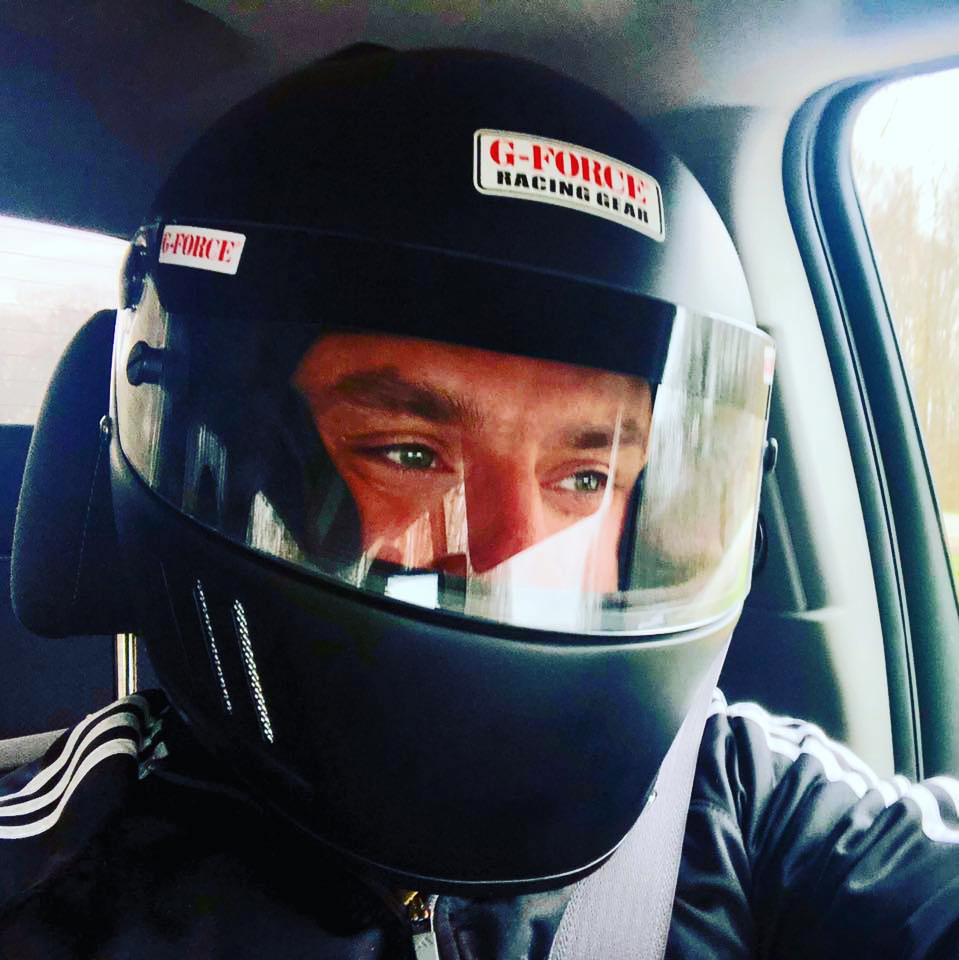
Rick Seitz is the owner and founder of AutoCentric Media, the parent company to Timeless MuscleCar Magazine, and has a true love and passion for all vehicles. When he isn’t tuning, testing, or competing with the magazine’s current crop of project vehicles, he’s busy tinkering and planning the next round modifications for his own cars.

